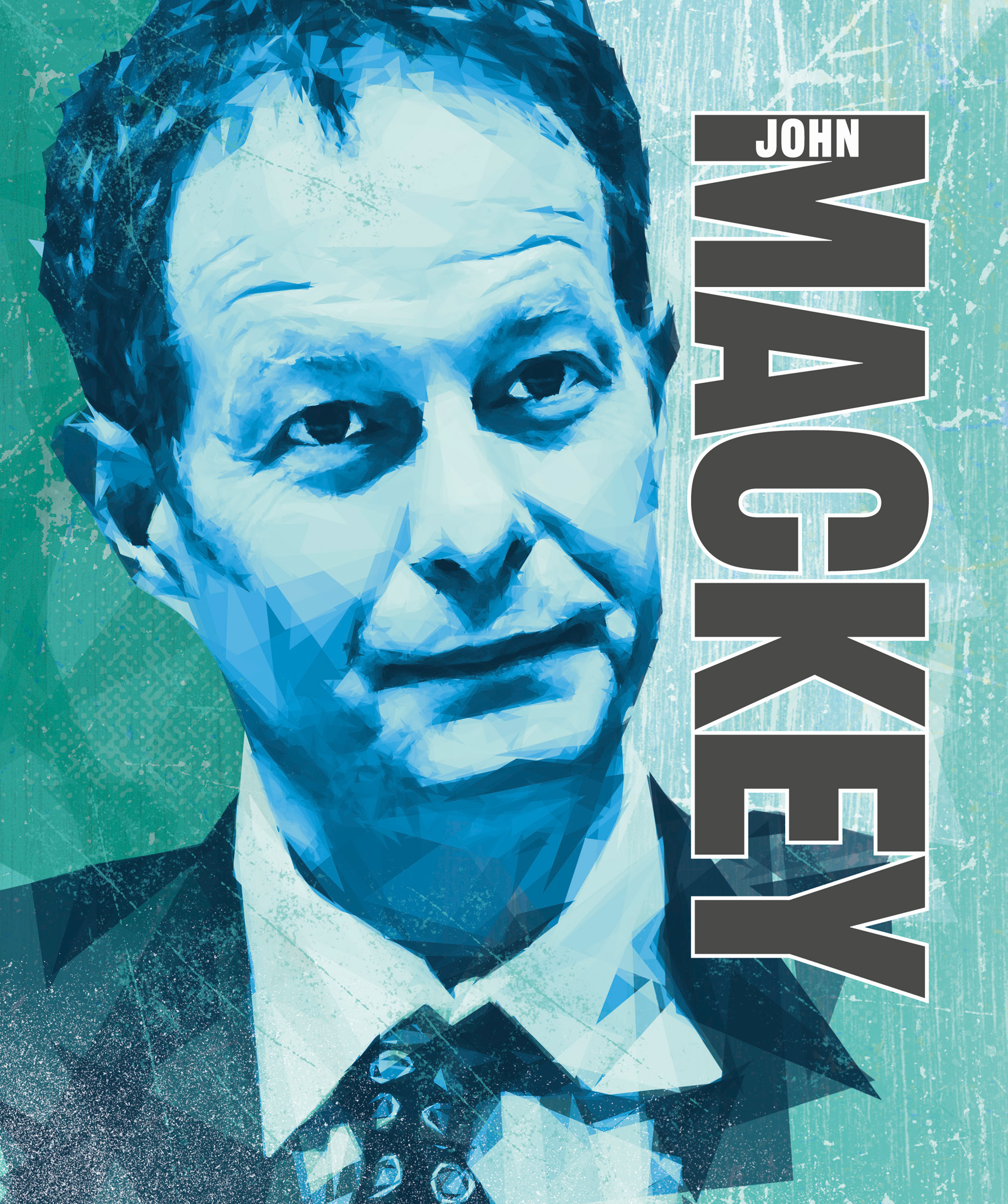
JOHN MACKEY
1953–
John Mackey’s mission to get Americans eating a healthier diet eventually made organic food mainstream. In the process, the businessman created one of the biggest grocery store chains in the US, with hundreds of outlets.
After dropping out of college, John Mackey, a committed vegetarian, scraped together $45,000 from family and friends in 1978 to open the Safer Way natural foods store in Austin, Texas, with girlfriend Renee Lawson. The shop sold no meat, sugar, caffeine, alcohol, or white flour. Sales did not take off, and in its first year of operation, the store lost half of Mackey’s investment. Mackey realized that it had been a mistake to limit his market by being too puritanical about what he sold. Two years later, Safer Way joined forces with Clarksville Natural Grocery, owned by Craig Weller and Mark Skiles. They moved to a larger building and changed the store’s name to Whole Foods Market, with the motto “Whole foods, whole people, whole planet.”
The food range was still organic—with no artificial flavorings, colorings, or preservatives—but it now included meat, sugar, and alcohol. Sales increased, but within a few months, a flash flood destroyed much of the premises and most of its stock. Undeterred, Mackey and his team enlisted the support of loyal customers, and the store was open again for business within a month.
Expansion amid tension
Whole Foods Market grew steadily in the 1980s, becoming a publicly traded company in 1992, but it still had only 10 outlets. Mackey began to acquire other organic retailers around the US, but the speed of growth created tensions with his father, Bill, who sat on the Whole Foods board. In 1994, believing his father’s conservatism was holding the company back, Mackey asked him to resign.
The next two decades were a period of rapid expansion for Whole Foods Market. New products, such as the packaged “365 Everyday Value” range, which included everything from freeze-dried fruit to organic body lotion, breakfast cereals, and shade-grown coffee, proved popular and helped build sales. Mackey also bought other regional natural foods chains to give the company a national profile. By 2004, new shops had even opened in Canada and the UK.
“To learn and grow, one must take chances and be willing to make mistakes.”
John Mackey, 2014
Food philosophy
Mackey argued that his mission in building Whole Foods Market was not simply about making money, because the chain’s produce contributed to the well-being of society. In one interview, he said that most Americans’ diet was so unhealthy that just a week of eating “real foods” would make a dramatic difference.
Mackey hired workers who bought into his philosophy of healthy eating and ethical capitalism, and their loyalty was secured with decent working conditions and an in-house health care program. In 1998, Fortune magazine listed Whole Foods Market in its top 100 companies to work for. Executive salaries were capped at 19 times the average pay of a full-time employee, and from 2006 Mackey slashed his own pay and bonuses.
Although his stores sold meat products, Mackey insisted that all suppliers upheld stringent standards on animal welfare. This ethical policy did not prevent Mackey from courting controversy, however, and his comments on trade unions, “Obamacare” health insurance, and climate change generated much negative press coverage.


Whole Foods Market was built on Mackey’s core values of improving the health of his customers, the community, and the environment. All products that are sold must meet the company’s stringent quality standards for being as natural as possible.
Changing markets
The high point for Whole Foods Market came in 2013, when its shares were priced at $65. By this time, though, longer-established retailers had woken up to the importance of the organic food market and could offer goods more cheaply than Mackey. In 2016, annual sales of natural and organic products at Kroger, the largest mainstream US supermarket chain, surpassed those of Whole Foods Market, whose stock price plummeted to $30. Nevertheless, the following year, Mackey sold his company to Amazon for $13.7 billion while staying on as CEO.
“You gotta catch the wave. If there’s no wave, you can’t surf.”
John Mackey, 2014
YVON CHOUINARD

An expert rock climber, American Yvon Chouinard grew his small outdoor equipment business into a billion-dollar company, Patagonia, while maintaining a strong environmental agenda.
In 1957, Chouinard (1938–) started making toughened steel pitons for his own use, going on to sell them to other climbers from the back of his car for $1.50 each. By 1965, he had set up Chouinard Equipment with fellow climber and engineer Tom Frost to redesign and manufacture stronger and lighter versions of a range of climbing equipment. When Chouinard discovered that pitons were damaging rock faces, he introduced reusable aluminum chocks, and the concept of “clean climbing” was born. In 1973, the company was renamed Patagonia, and it branched out into clothing as well as hardware. It pledges to give 1 percent of sales, or 10 percent of profits (whichever is greater), to environmental campaigns.
MILESTONES
OPENS FIRST STORE
In 1978, sets up Safer Way organic grocer’s in Austin, Texas, after living in a vegetarian cooperative.
JOINS BUSINESSES
Whole Foods Market is formed when Safer Way merges with Clarksville Natural Grocery in 1980.
SURVIVES FLOOD
In 1981, rebuilds business after a flood destroys the uninsured Whole Foods Market store and its stock.
FUNDS EXPANSION
Takes Whole Foods Market public in 1992, raising $28 million; this funds expansion across the US.
SELLS UP
In the face of increasing competition, sells Whole Foods Market to Amazon for $13.7 billion in 2017.
